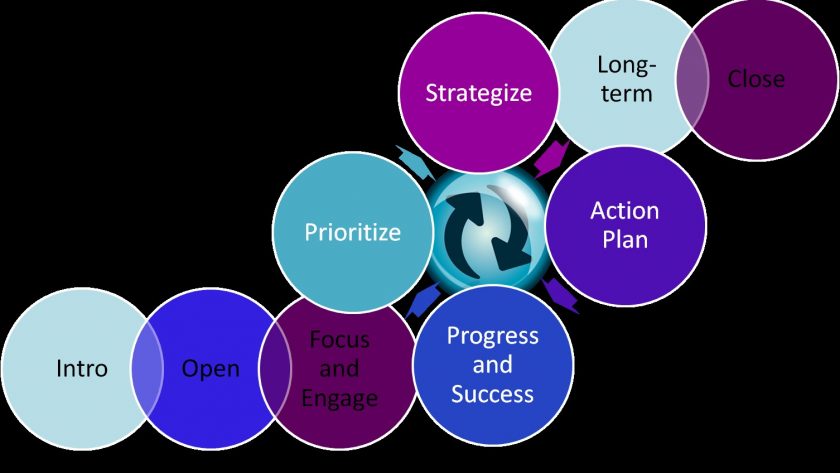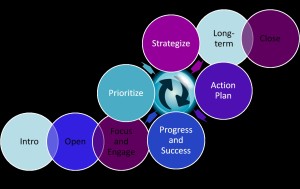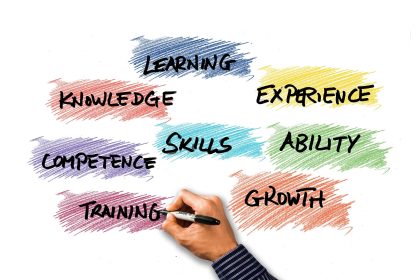In the previous blog post, model and process definitions were applied to coaching. The model of how the coaching relationship works was described. Now the coaching process is explained here.
Prior to engaging in a coaching relationship, an introductory coaching session provides exposure to the coaching process and an idea of the benefits. This is done by giving the coachee an opportunity to explore interests, needs, and wants. During the introductory session, both the coach and the coachee are considering whether they are a good fit for working together.
After engaging in the coaching relationship including signing an agreement and reviewing the Code of Ethics, an opening coaching session is a big-picture exploration that provides perspective and an understanding of the coachee’s priorities, values, and influencing factors.
In support of coachee success achieving their goals now and for the long term, in the second coaching session tools and techniques for maintaining focus and developing habits over the long-term are developed.
By the third coaching session the coachee chooses the focus of the coaching conversation, deciding what they want to accomplish in that session. Coaching sessions are a time for checking on progress, exploration, strategy development, and action planning. The coachee may want to focus on skill development, change, strategizing, or making decisions.
The coaching relationship supports the coachee developing new tools, skills, and processes for them self. While the length of the coaching relationship varies, the average time is twelve months. Prior to ending the regularly scheduled coaching sessions, plan a coaching session focused on how the coachee will maintain and build on their success. Plan a final debrief of the coaching relationship and coaching process.




